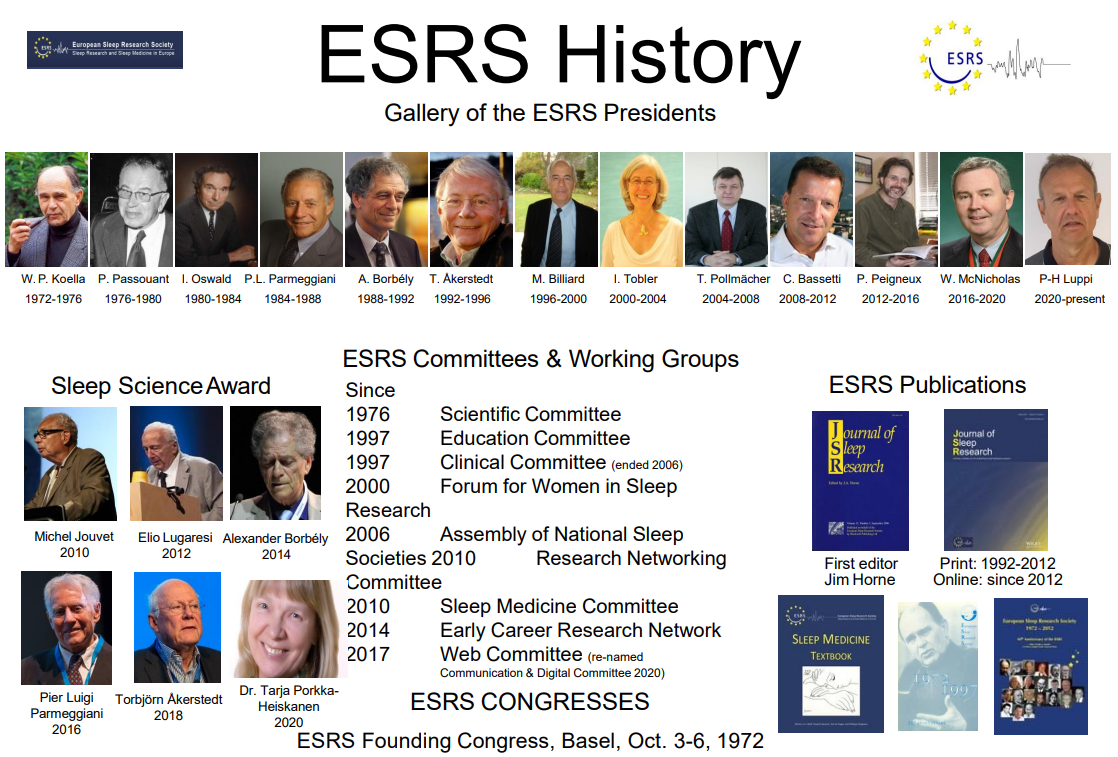Human Hibernation – Science Fiction or Future Reality?
Share it

Prof. Dr. Vladyslav Vyazovskiy
Professor of Sleep Physiology at the Department of Physiology, Anatomy and Genetics, University of Oxford, United Kingdom, Researcher at the Jules Thorn Sleep and Circadian Neuroscience Institute and member of the ESRS Board as Vice President (Basic).
In this Sleep Science Friday publication, Dr. Isabela Santos Valentim from the ESRS’ Digital & Communications Committee comments on Professor Vladyslav Vyazovskiy’s TEDx talk (from last November 2022) entitled “Could humans hibernate?”.
Human hibernation is mostly perceived as a science-fictional concept. However, hibernation is a real method of energy conservation known to be used by a variety of animal species. This behavior is characterised as a reduction of metabolic demands that could favor survival by saving energy. Intriguing, though, is to understand how it happens and how animals know the time to start hibernating.
Human hibernation: an ancestral memory?
In this thought-provoking talk at the TEDx Limassol, Prof. Vladyslav Vyazovskiy shared his passion for the topic through his work as a master’s student in Kharkiv, Ukraine, and later as a PhD student in Zurich, Switzerland. At this time, he was studying torpor in the Djungarian hamster (Phodopus sungorus). By making the days shorter in a laboratory setting, these animals would perceive the change, alter their fur, and start entering torpor almost daily as if it was winter season. Moreover, this behavior would take place after falling asleep, suggesting that sleep could be a gatekeeper for hibernation. It is important to emphasise, however, that sleep and hibernation are not the same.
Could humans, then, also hibernate?
This is still an unanswered question with a myriad of future perspectives. Human hibernation can serve numerous purposes: using hibernation pods to induce human stasis for long-distance space travel and surviving environmental disasters, for longevity medicine like postponing aging and treatment of incurable diseases, organ preservation and treatment of different disorders such as cancer, neurodegenerative diseases and strokes. First, we need to understand how it can be possible and answer questions such as: What does it look like? How would it feel? What is the impact on the brain and other organs? Will we still have dreams?
We know, for instance, that the brain is highly active during slumber, though in a manner distinct from wakefulness. Remarkably, the underpinning of what happens in our body during hibernation is vastly unknown. Curiously, scientists already observed that during hibernation or hypothermia, some proteins in the brain undergo modifications like those found in Alzheimer’s patients, accompanied by a degree of synapse regression. These changes are, interestingly, restored upon arousal from hibernation. This places hibernation as a remarkable example of brain plasticity and by discovering its mechanisms we might find new venues to treat or slow down the progression of human diseases.
Did human beings lose their capacity to hibernate? Or just forget how to use it?
Prof. Vyazovskiy concludes his lecture by noting that some primate species hibernate, and he suggests that humans may have been able to hibernate in the past but lost the ability as a result of learning how to make fire and construct warm shelters.
As a result, it prevented us from this close connection with the ever-changing outside environment. So, can we revive this (predicted) ancestral memory? Are we up for this challenge? And, if hibernating were a reality, would you try it?
To watch Prof. Vladyslav’s full TEDx talk on human hibernation, please click on the video below.
Sleep sound and have a nice weekend!
This video was post by TEDx Talks YouTube channel.

Article written by Dr. Isabela Santos Valentim
Postdoctoral researcher at the Leibniz Institute on Aging – Fritz Lipmann Institute (FLI) and a member of the ESRS Digital and Communication Committee.
Recent publications from ESRS members
- Hiestand et al. (2023). Associations between excessive fatigue and pain, sleep, mental-health and work factors in Norwegian nurses. PLoS One.
- Moro et al. (2023). Automatic Video Analysis and Classification of Sleep-related Hypermotor seizures and Disorders of Arousal. Epilepsia.
- Rach et al. (2023). Pupillometry to differentiate idiopathic hypersomnia from narcolepsy type 1. J Sleep Res.
Dauvilliers et al. (2023). Safety and efficacy of pitolisant in children aged 6 years or older with narcolepsy with or without cataplexy: a double-blind, randomised, placebo-controlled trial. Lancet Neurol.
- Reesen et al. (2023). Do better nights lead to better days? Guided internet-based cognitive behavioral therapy for insomnia in people suffering from a range of mental health problems: Protocol of a pragmatic randomized clinical trial. Contemp Clin Trials.
- Jaramillo et al. (2023). An infant sleep electroencephalographic marker of thalamocortical connectivity predicts behavioral outcome in late infancy. Neuroimage.
- Riccardi et al. (2023). Pharmacological responsiveness of periodic limb movements in patients with restless legs syndrome: a systematic review and meta-analysis. J Clin Sleep Med.
- D’Alterio et al. (2023). Resilience and its correlates in patients with narcolepsy type 1. J Clin Sleep Med.
- Virtanen et al. (2023). Effect of external sleep disturbance on sleep architecture in perimenopausal and postmenopausal women. Climacteric.
- Breda et al. (2023). Sleep habits and sleep disorders in Italian children and adolescents: a cross-sectional survey. J Clin Sleep Med.



